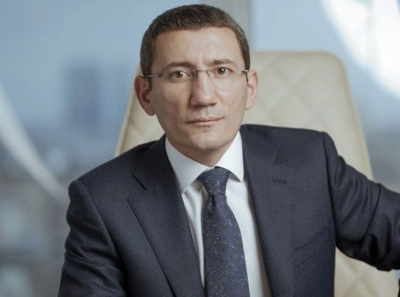
Inside the Pit: Andrew Benson's Exclusive Insights on the Miami Grand Prix
Analyzing McLaren's Ascendancy: Lando Norris, Zak Brown, and the Road to Redemption
Lando Norris stands at the epicenter of McLaren's resurgence, his commitment fortified by a recent contract extension until 2026. With unwavering loyalty, Norris embodies McLaren's ethos, a sentiment echoed in his triumph at the Miami Grand Prix. His words resound: "I stuck with McLaren because I could believe in them, and today proved exactly that.
The narrative of McLaren's revival intertwines with the strategic orchestration of Andrea Stella, elevated to team principal following a tumultuous period. Stella's appointment, catalyzed by Zak Brown's discontent with stagnation, sparked a transformative era. McLaren's trajectory, once mired in mediocrity, now arcs steeply upward.
Under Stella's stewardship, McLaren swiftly shed the shackles of underperformance. A tactical overhaul, marked by technical reconfigurations, propelled McLaren from obscurity to contention. Each upgrade, meticulously engineered, symbolizes a quantum leap towards reclaiming former glory.
Yet amidst McLaren's meteoric ascent, speculation swirls regarding the pursuit of Adrian Newey, a luminary in Formula 1 design. While McLaren acknowledges Newey's pedigree, the prevailing sentiment within the team hints at a tempered approach. Zak Brown's camaraderie with Newey, epitomized by their joint venture in the Monaco historic Grand Prix, underscores a relationship founded on mutual respect rather than fervent pursuit.
In McLaren's narrative of redemption, the question of Newey's involvement remains open-ended. As they bask in the glow of success, McLaren navigates the future with cautious optimism, cognizant of the strides made and the challenges yet to overcome.
Contemplating Newey's Role and Magnussen's Missteps: Insights from Zak Brown
The allure of Adrian Newey in Formula 1 is undeniable, his expertise a beacon for teams seeking excellence. Yet, the prospect of his recruitment is tempered by practicalities. Newey's steep price tag and part-time commitment necessitate careful consideration. Zak Brown, McLaren's Racing CEO, acknowledges Newey's potential while affirming confidence in McLaren's current trajectory under Andrea Stella's leadership.
Speaking from Miami, Brown extolled Newey's value while affirming McLaren's contentment with their current path. His words, laden with nuance, suggest a measured approach to potential acquisitions. While McLaren remains open to opportunities for enhancement, Brown's emphasis on continuity and strategic planning underscores a deliberate stance.
Speculation abounds regarding Newey's next move, with Ferrari emerging as a frontrunner. The intrigue deepens considering Newey's early contract release, signaling a potential return to Formula 1. Brown's comments offer insight into McLaren's perspective, hinting at a pragmatic outlook tinged with respect for Newey's legacy.
Meanwhile, the controversy surrounding Kevin Magnussen's performance in Miami casts a shadow over McLaren's narrative of progress. Magnussen's tumultuous weekend, marred by penalties and collisions, prompts scrutiny of his conduct on the track. McLaren's response, articulated by Andrea Stella, condemns Magnussen's actions as unacceptable, advocating for stringent penalties reflective of his behavior.
As Magnussen teeters on the brink of a mandatory race ban, McLaren confronts the implications of his actions within the broader context of sportsmanship in Formula 1. Stella's call for introspection underscores the gravity of Magnussen's transgressions, challenging him to reassess his approach to competition.
In the juxtaposition of Newey's allure and Magnussen's missteps, McLaren navigates the complexities of Formula 1, balancing ambition with integrity in pursuit of excellence.
Navigating the Threshold: Magnussen's Dilemma and the Dynamics of Team Upgrades
The precarious position of Kevin Magnussen underscores the high stakes of Formula 1 competition. With a looming threat of a race ban, Magnussen faces a daunting challenge: to navigate the remainder of the season without accruing further penalty points. The road ahead is fraught with obstacles, demanding a fundamental reassessment of his racing approach to avoid dire consequences.
In the realm of team dynamics, the question of parity within McLaren's ranks emerges. James raises a pertinent query: to what extent should cars within the same team mirror each other? While teams strive for uniformity to foster harmony, practical constraints often dictate divergent upgrade paths. Such was the case in Miami, where Lando Norris and Oscar Piastri piloted cars with varying degrees of enhancement. Piastri's mature response to the situation underscores the complexity of managing disparities within a team, his performance defying expectations and highlighting his prowess on the track.
Addressing a broader inquiry from Peter, the evolution of Formula 1 cars comes into focus. While contemporary F1 machines boast formidable performance metrics, the driving experience has undergone subtle shifts. Enhanced downforce and braking capabilities coexist with increased weight, challenging drivers to adapt to a nuanced blend of speed and handling. Furthermore, the influence of Pirelli tires introduces a strategic dimension, compelling drivers to temper their pace to optimize tire performance.
The phenomenon of longer driver careers in Formula 1 is multifaceted. While modern cars offer unparalleled performance, mitigating physical demands through tire management contributes to prolonged competitiveness. As drivers harness technological advancements and strategic acumen, the prospect of enduring careers becomes increasingly attainable, reshaping the narrative of longevity in the sport.
In the ever-evolving landscape of Formula 1, drivers confront a delicate balance of performance and preservation, while teams navigate the intricacies of technical development and cohesion. Magnussen's plight and the nuances of team dynamics illuminate the complexities inherent in the pursuit of excellence on the track.
Legends of the Pit: Pioneers and Icons in Formula 1 Team Leadership
In the annals of Formula 1 history, the longevity and impact of drivers like Fernando Alonso and Lewis Hamilton underscore the enduring power of determination. Despite the rigors of competition, these titans defy conventional expectations, their unwavering desire propelling them into their fourth decade of racing. Yet, the demands of age, from diminishing eyesight to physiological changes, loom as inevitable challenges on the horizon.
Reflecting on the evolution of Formula 1, Edward poses a thought-provoking question: Who stands as the greatest team principal of all time? The answer, inherently subjective, beckons a journey through the sport's storied past, where visionaries and trailblazers left an indelible mark on the landscape of racing.
Enzo Ferrari emerges as a foundational figure, his transition from team principal to the founder of an iconic empire shaping the very essence of Formula 1. Alfred Neubauer's stewardship of the Mercedes Silver Arrows during their dominant era epitomizes strategic mastery and tactical brilliance.
Colin Chapman's innovative genius, epitomized by groundbreaking designs and revolutionary concepts, solidifies his place among the pantheon of team principals. Similarly, Luca di Montezemolo's transformative leadership at Ferrari, culminating in the Schumacher era, embodies a resurgence of unparalleled magnitude.
Jean Todt's orchestration of the Schumacher-Brawn-Byrne triumvirate at Ferrari ushered in an era of unprecedented success, epitomizing the synergy of talent and vision. Meanwhile, Ron Dennis's visionary leadership at McLaren in the 1980s heralded a new era of excellence, setting the bar for innovation and excellence.
While the debate rages on, one thing remains certain: the legacy of these luminaries transcends mere accolades, shaping the very fabric of Formula 1 and inspiring generations to come. In the hallowed halls of motorsport, their contributions stand as testaments to the power of leadership and innovation on the grandest stage of all.
In the tapestry of Formula 1, the saga of leadership is one of innovation, triumph, and enduring legacy. From Colin Chapman's pioneering spirit to the modern-day mastery of Toto Wolff and Chr








